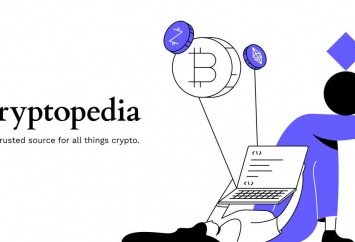
Table of Contents
What is a zkEVM?
A zkEVM , or Zero-Knowledge Ethereum Virtual Machine, is a virtual machine that runs on the Ethereum network and helps verify the correctness of smart contracts using zero-knowledge proofs (ZKPs).
zkEVM are protocols that act as an extension of EVM, in the form of a layer 2 solution, combining the flexibility and robustness of the Ethereum Virtual Machine (EVM) with the confidentiality and efficiency benefits provided by ZKPs .
zkEVMs emerged in response to the scalability and privacy challenges facing Ethereum .
As the Ethereum blockchain grows in popularity, it faces limitations in terms of number of transactions per second and high gas fees, negatively impacting user experience and hindering adoption.Cryptoast Research: Don’t waste this bull run, surround yourself with experts
Researchers and developers have therefore explored how to integrate Zero-Knowledge Proofs (ZKPs), a promising technology for privacy and efficiency, within the Ethereum architecture .
Therefore, designed to optimize the efficiency of the Ethereum network, a zkEVM reduces the load on nodes by aggregating transactions through compact proofs of validity, while maintaining smooth integration with the existing Ethereum development ecosystem.
zkEVMs therefore make it possible to execute and verify transactions and smart contracts, without requiring the disclosure of all transactional data , thus preserving confidentiality while ensuring the validity of operations on the blockchain.
Here are some of the most well-known zkEVMs to date :
- Scroll ;
- zkSync ;
- Polygon Hermez;
- Linea;
- Immutable zkEVM;

The different zkEVMs and their compatibility with Ethereum
How do zkEVMs work?
The operation of zkEVMs relies on the integration of two key technologies: Zero-Knowledge Proofs (ZKP) and the Ethereum Virtual Machine (EVM) , each bringing its own advantages to the overall architecture .
The role of zero-knowledge proofs
At the heart of zkEVM is the concept of zero-knowledge proofs, a cryptographic technique allowing a prover to convince a verifier of the truth of a claim without revealing any additional information .
In the context of zkEVMs, this property is exploited to verify transactions and executions of smart contracts in a way that the specific details of these transactions remain private, while ensuring their integrity and validity on the blockchain.
Compatibility with EVM
zkEVMs maintain close compatibility with EVM, meaning developers can deploy smart contracts written in Solidity (the most widely used programming language on Ethereum) without major modifications.
This compatibility ensures a seamless transition for existing applications wishing to benefit from the benefits of zkEVM, including significantly reduced gas costs and improved privacy.Cryptoast Research: Don’t waste this bull run, surround yourself with experts
Transaction processing process
Transaction processing in zkEVMs occurs in two main stages: off-chain consolidation and on-chain verification. Transactions are first grouped off-chain in a rollup.
For each batch of transactions, a zero-knowledge proof is generated, encapsulating the overall validity of the batch without disclosing individual details. This consolidated batch and its proof are then submitted to the Ethereum blockchain, where the proof is verified.
This process allows a large number of transactions to be processed in a single block of the main chain , significantly improving the efficiency and scalability of the network.
The advantages of zkEVM for Ethereum
The introduction of zkEVMs offers a multitude of benefits.
Scalability and cost reduction
One of the most important benefits of zkEVMs is their ability to improve scalability and reduce fees within the Ethereum ecosystem.
Thanks to the zero-knowledge proof implementation, zkEVMs make it possible to group hundreds or even thousands of transactions into a single rollup before submitting them to the main blockchain.
This approach significantly reduces the amount of data needed to be processed and stored on the main chain, significantly lowering transaction fees.
Security and Privacy
zkEVMs leverage zero-knowledge proofs to improve the security of transactions on Ethereum. By allowing transaction verification without revealing underlying details, zkEVMs ensure that sensitive data remains private and secure .
This feature is particularly valuable in a world where data privacy is increasingly becoming a major concern, providing an additional layer of protection against potential threats and building trust in the Ethereum ecosystem.Cryptoast Research: Don’t waste this bull run, surround yourself with experts
Interoperability and adoption
Interoperability and adoption of the Ethereum blockchain is greatly facilitated by zkEVMs. By maintaining full compatibility with EVM, these new virtual machines allow developers to effortlessly migrate their existing applications to zkEVM solutions, without having to significantly rewrite or adapt their code.
This continuity ensures that innovations and improvements in scalability and privacy can be integrated without disrupting the existing ecosystem, thereby encouraging broader and faster adoption among developers.
Additionally, by eliminating technical barriers and simplifying the integration of new solutions, zkEVMs are instrumental in accelerating blockchain adoption and expanding its utility beyond current boundaries, promising a future where Ethereum can serve an even wider range of applications across different sectors.
The different types of zkEVM and their importance
zkEVMs are classified into several types, each responding to specific trade-offs between performance, compatibility with traditional EVM and ease of implementation of zero-knowledge proofs.
Type 1 represents the purest form of zkEVM , aiming for full equivalence with Ethereum’s traditional EVM. Although offering maximum compatibility, this type can face challenges related to the complexity of proofs and their generation time.
Type 2 also aims for strong compatibility while accepting minor adjustments to optimize proof generation, seeking a balance between performance and fidelity to the EVM.
Type 2.5 has the characteristics of type 2 but modifies the elements concerning the gas cost . This allows proofs to be generated more quickly although it can result in incompatibilities.
Type 3, exemplified by projects such as Scroll and Polygon Hermez, sacrifices some compatibility with EVM for significant gains in scalability and proof efficiency, accommodating deeper changes to the architecture. It poses a challenge for developers who may need to adapt their smart contracts to take full advantage of these platforms.
Scroll is positioned as a cutting-edge solution in the world of zkEVM, seeking to maximize the scalability of Ethereum while preserving strong compatibility with the EVM, for a smooth and efficient transition of existing applications.
Polygon Hermez, as an integral part of the Polygon ecosystem, uses zkEVM technology to deliver high-throughput, low-cost transactions, contributing to the vision of a more accessible and resource-efficient Ethereum.
Type 4, with zkSync 2.0 and Nethermind’s Warp, focuses on converting high-level code into a form optimized for zk-SNARKs, offering great flexibility to developers but requiring adaptation to this new way of designing applications .
This approach offers a significant reduction in transaction fees, although it may require adjustments in the development of dApps to align with the specifics of the implementation.

The different types of zkEVM and their main characteristics
Other examples like Linea and Immutable zkEVM illustrate the diversity of approaches and goals within the zkEVM space , each seeking to solve Ethereum’s scalability and privacy challenges through different lenses.
Linea focuses on improving interoperability and development experience , while Immutable zkEVM specifically targets the requirements of games and NFTs on the blockchain .
👉 What is Linea? Everything you need to know about this layer 2 of Ethereum developed by Consensys
Together, these different zkEVM types play a critical role in adapting Ethereum to the changing needs of its ecosystem , providing developers with a range of options to optimize the performance, security, and compatibility of their Web3 applications.
By exploring and adopting these different approaches, the Ethereum community is moving towards a more versatile, secure and scalable blockchain, ready to accommodate the next generation of decentralized applications and its millions of users.
Future prospects for zkEVMs
zkEVMs represent a major step forward in Ethereum’s effort to overcome its historic challenges in scalability and privacy.
By enabling faster and cheaper transactions while preserving user privacy, zkEVMs address key issues hindering mass adoption of blockchain.
The vision for the future of zkEVMs is ambitious: they are seen as catalysts that could not only transform Ethereum but also have a profound impact on the entire blockchain ecosystem.
By providing close compatibility with EVM while introducing the substantial benefits of zero-knowledge proofs, zkEVMs promise to make decentralized applications more efficient, secure and accessible .Cryptoast Research: Don’t waste this bull run, surround yourself with experts
Sources: Chainlink , Treehouse.Finance


